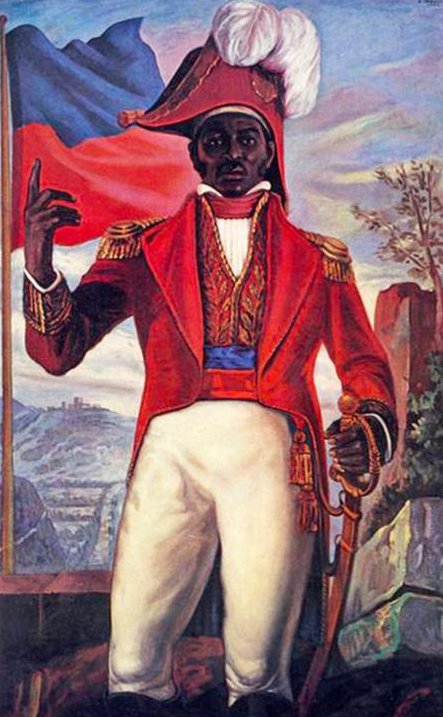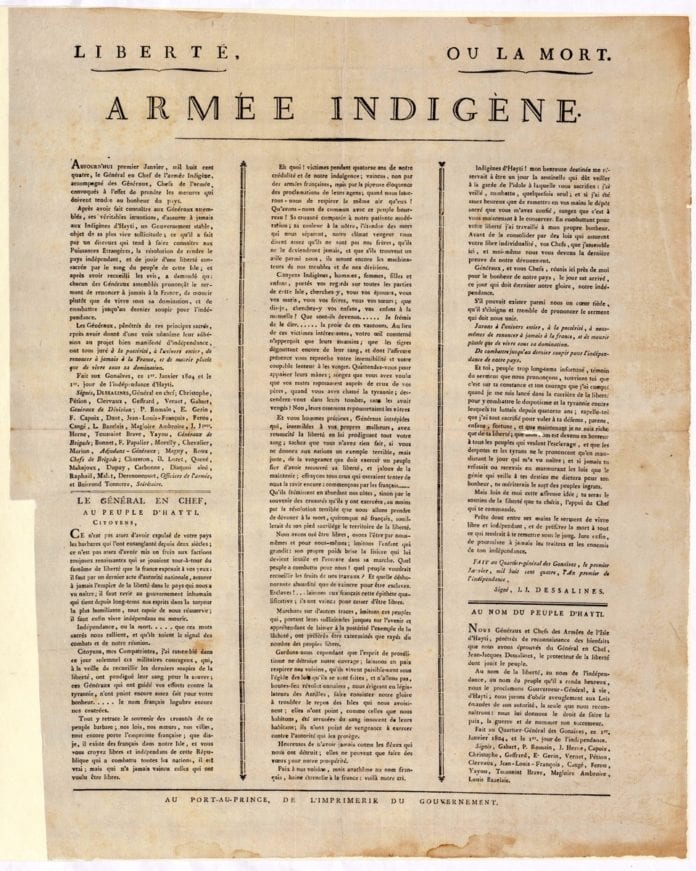The First of January is a very important day to the Haitian people. Not only is it the day they celebrate the New Year, but it is also the day they celebrate their independence from France’s rule over them.
The Haitian Declaration of Independence was signed into law on January 1st, 1804. It is the equivalent of the United States’ Declaration of Independence that was signed in 1776. The only difference is that Haiti declared independence from France, while the United States declared independence from Great Britain.
The Haitian people celebrate their Independence Day every New Year by participating in parades, lighting fireworks, singing the Haitian National Anthem, and dancing in the streets. In Haiti’s capital city of Port-au-Prince, thousands of Haitians gather downtown at the Champ de Mars. It is the largest public park of the city and is comprised of several different public squares and boulevards.
Near Champ de Mars is the National Palace where the President of Haiti resides. Haitians also like to visit the National Palace to celebrate their Independence Day. Sometimes the President of Haiti will even give a speech to the thousands of Haitians who assemble themselves outside of the palace.
However, over the last 10 years, the National Palace has been slowly getting rebuilt after it was severely damaged during the 2010 earthquake. But the power of the earthquake never stopped the Haitian people from continuing to celebrate their Independence Day each year.
Even the poorest and most impoverished Haitians always find a way to celebrate the occasion. Some of them might save up money for a new set of clothes to wear on Independence Day. Others might visit their friends or exchange simple gifts with their loved ones. Haitians believe the more effort put toward celebrating the First of January, the more rewards they will receive throughout the coming year.

The History of Haitian Independence Day
The first ruler of the newly independent Haiti, Jean-Jacques Dessalines, signed the declaration at a port city called Gonaïves. Dessalines was one of the chief leaders of the Haitian Revolution, which caused the French government to abandon Haiti and let the self-freed slaves take over the land and rule it as their own. As soon as the declaration was signed, the independence of Haiti became official.
Haiti was the first black country in the Western Hemisphere to achieve independence through a slave revolution. It was something that could not have been done anywhere else, especially in the United States. If the slaves in the United States had tried to revolt, they never would have succeeded. The Americans were more resourceful and their manpower and wealth were virtually unlimited.
Fortunately for the former slaves of Haiti, the American slaveowners did not have any interest in conquering Haiti and enslaving the local people. They already had African slaves back on the mainland. There was no incentive to travel to Haiti and take more slave, especially since those slaves were so rebellious to begin with.
As for France, they lost interest in Haiti after its revolutionary war had destroyed the agriculture and other parts of the landscape. It didn’t even have gold left in its mines anymore because of the Spanish explorers that took it all before the French colonists came along. So, there was no real interest for France to continue pursuing Haiti.
The Haitians finally achieved their independence. The Haitian Declaration of Independence was the official document that marked the end of the long-lasting Haitian Revolution. It was the first and only time when a slave revolution had been successful in achieving independence from their captors.
The Haitian Declaration of Independence
The original Haitian Declaration of Independence was written by hand. Its whereabouts are unknown but there are two copies of it that still exist today. In 2010, a postgraduate student from Duke University named Julia Gaffield happened to discover both copies of the declaration in the UK National Archives.
The Haitian Declaration of Independence has three sections. The lengthiest section in the middle is entitled, “Le Général en Chef Au Peuple d’Hayti.” It is the proclamation or prologue of the declaration that translates to “The Chief General to the People of Haiti.” There is only one signature at the end of the document and it is from Jean-Jacques Dessalines, who was a former slave and one of the top generals of the Haitian Revolution.
Dessalines did not handwrite the declaration himself, though. Since he could not read or write French, Dessalines had his secretary translate his spoken words into French on the declaration document. Louis Boisrond-Tonnerre was the name of his secretary and once she was done writing out the declaration, she read the proclamation for everyone to hear.
After that, Dessalines gave an Independence Day speech in Haitian Creole where he talked negatively about France. He recited parts of the declaration that discuss seeking vengeance against their former French captors, referred to as “French White Creoles.” Dessalines didn’t believe it was enough to simply expel them from their land. They wanted to ensure that the French could never enslave them again.
Dessalines ordered all the former soldiers and freed slaves of the Haitian Revolution to kill the remaining French population in Haiti. His soldiers went to every home and specifically targeted the white population, which were the French Creoles. It was a genocide that has been called the 1804 Haiti Massacre. As a result of the massacre, between 3,000 and 5,000 white people were killed in Haiti between January and April of 1804.

